16 Must-Visit Historic Sites and Attractions in Vermont
Note: Advertising is how we keep this site free for you to enjoy, and we earn a commission from affiliate links that may be included in this post. Thank you for supporting Vermont Explored!
Whether you love old buildings and bridges or touring historic sites and museums, there are plenty of things to do in Vermont to expand your knowledge.
From the expansive to the obscure, here are some of our favorite museums and historic sites in the state.
1. Explore the Expansive Shelburne Museum
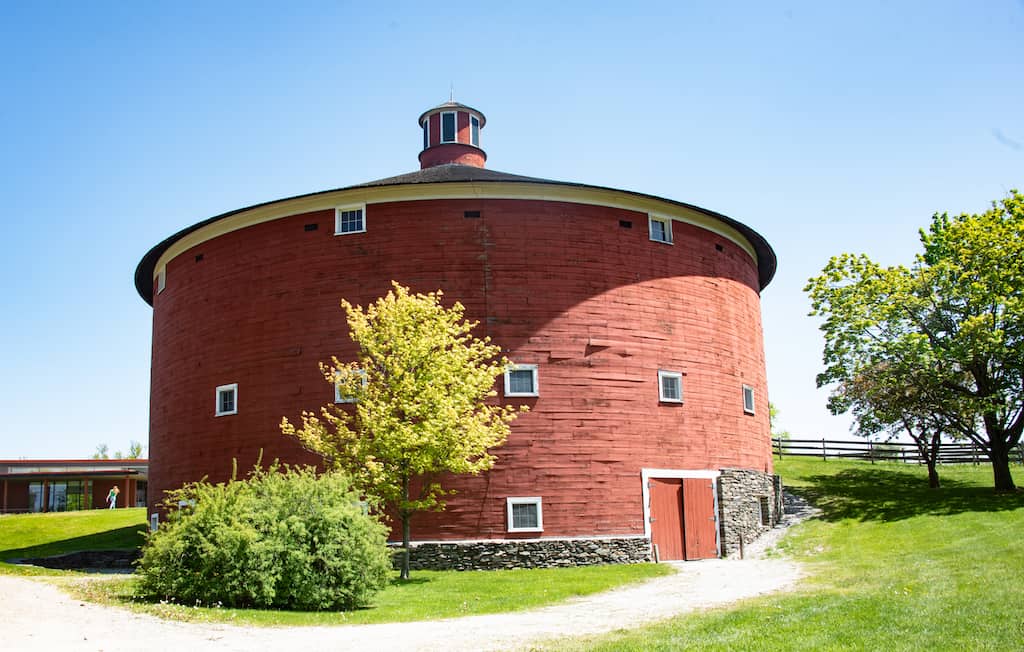
Explore more of Vermont and the rest of the world at the Shelburne Museum in Shelburne, Vermont. This is the largest art and history museum in northern New England and one of our favorite stops whenever we visit the Burlington area.
The Museum’s 45-acre campus includes a Shaker design Round Barn, a General Store, a carousel, and the 220-foot sidewheel steamboat Ticonderoga.
Meander through acres of beautiful gardens outdoors and check out the Webb Gallery, which features important American paintings by Andrew Wyeth, Winslow Homer, Grandma Moses, John Singleton Copley, and more.
The Shelburne Museum is closed in the winter, but the grounds open up for a few weeks during the holidays for Winter Lights.
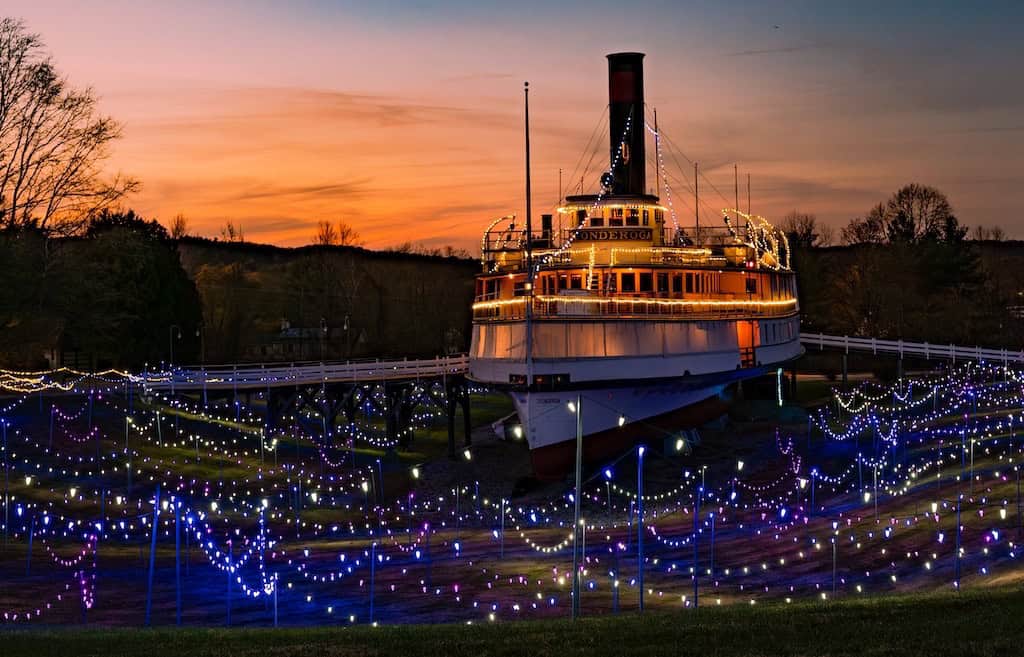
From cascading, firefly-like twinkles in the enchanting Beach Woods to the iconic steamboat Ticonderoga set aglow on a shimmering “sea” of lights, this is the holiday event that Vermonters and visitors will be thrilled to attend.
Read Next: Plan a Perfect Summer Weekend in Shelburne, Vermont
2. Explore More Than 100 Covered Bridges in Vermont
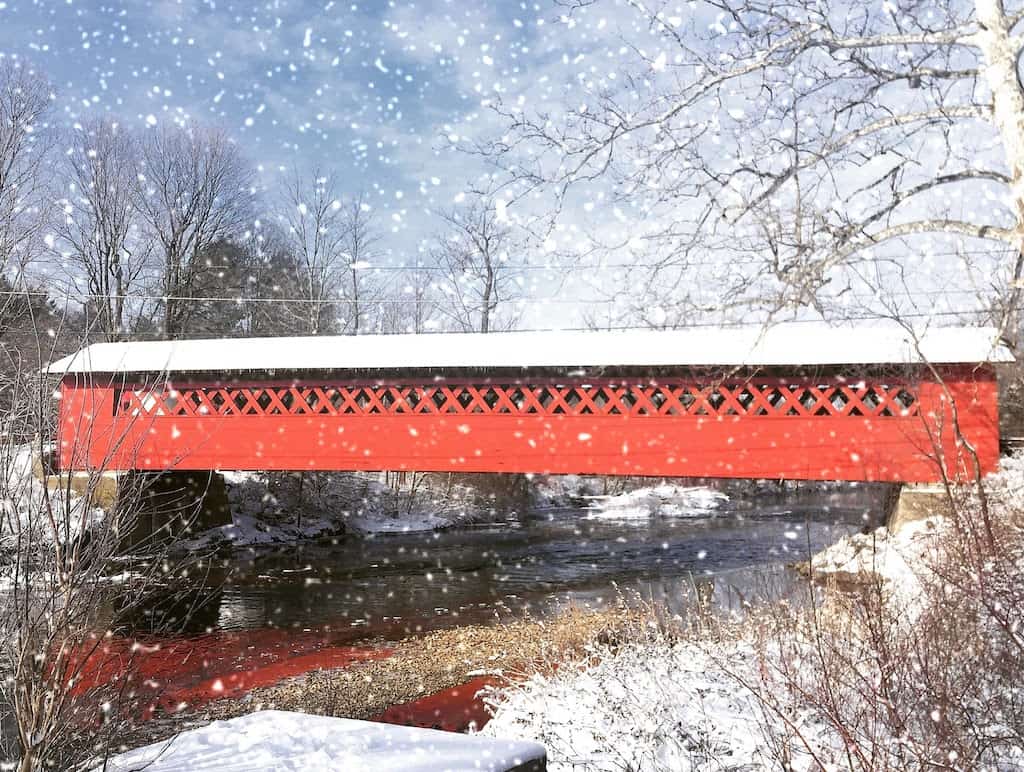
Per square mile, there are more covered bridges in Vermont than anywhere else in the United States — more than 100 in all.
Most covered bridges in Vermont were built between 1825 and 1875 to prevent the trusses and decks from rotting from prolonged exposure to snow and rain.
Some of our favorites include the five covered bridges in Bennington County, the six covered bridges in the Woodstock/Quechee area, and eight covered bridges in Montgomery, known as the ‘Covered Bridge Capital of Vermont.’
3. Visit the Homes of Two Former Presidents from Vermont
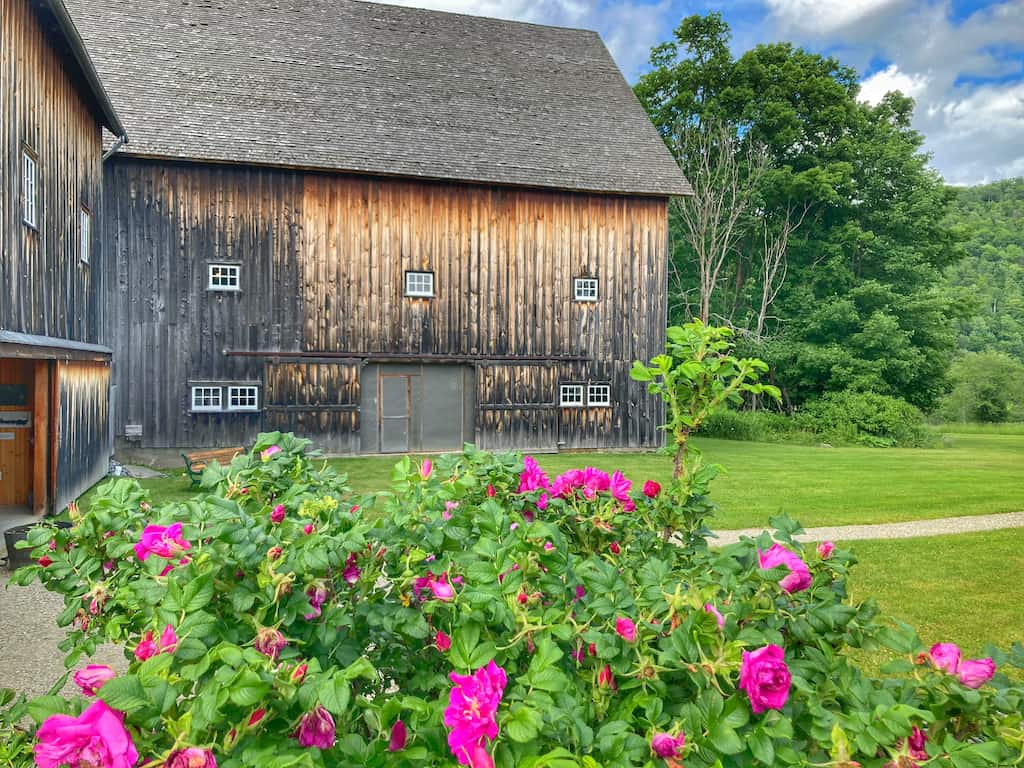
Two US presidents called Vermont home, Chester A. Arthur, the nation’s 21st president was born in Vermont in 1829.
You can visit a reconstruction of his boyhood home in Fairfield, Vermont. The President Chester Arthur Historic Site was Vermont’s first state-run historic site. Interior exhibits will be closed in 2022, but the grounds are always open.
President Calvin Coolidge was our 30th president, and the President Calvin Coolidge State Historic Site in Plymouth Notch preserves his birthplace and childhood home.
Today, the Coolidge Homestead is furnished exactly as it was when Vice President Calvin Coolidge took the oath of office following the unexpected death of President Warren G. Harding.
Over the next 40 years, the State of Vermont obtained ownership of the major parcels of land and significant buildings comprising the village to preserve Plymouth Notch as Calvin Coolidge remembered it.
Visit President Calvin Coolidge Historic Site between late and late October, between Tuesday and Sun day, from 10 am – 5 pm. Tickets are $12.00 for adults and $4 for children 6-14. Children under 6 are free, and a family pass for up to 8 people is $30.
As a photographer, a visit to the Calvin Coolidge Historic Site is one of my favorite things to do in Vermont. There are so many beautiful buildings!
4. Frolic with Farm Animals at Billings Farm and Museum
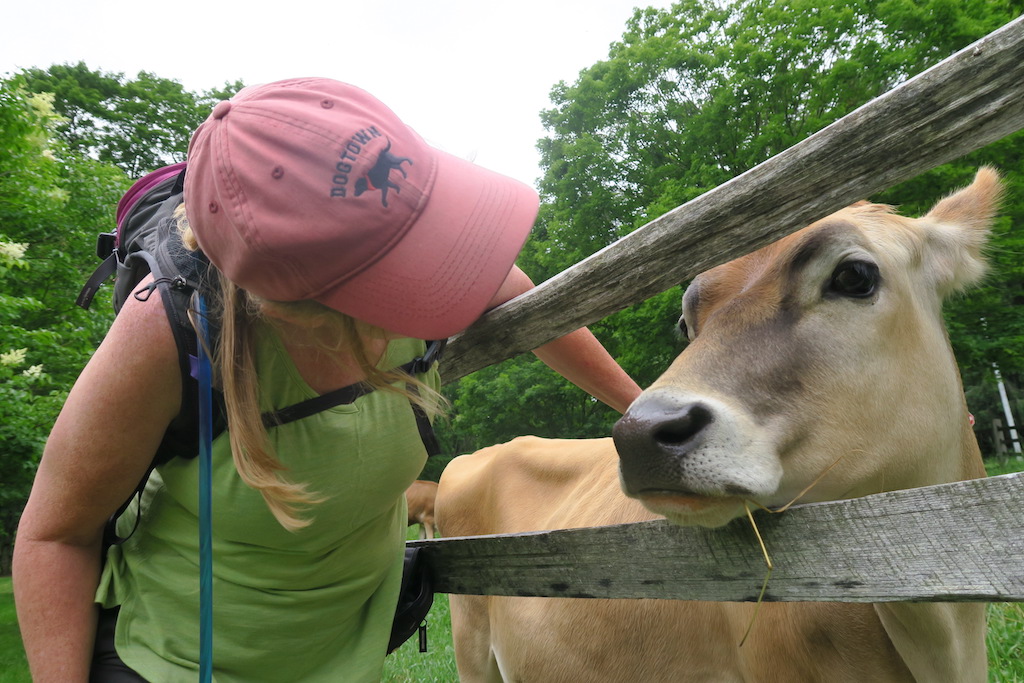
Farming roots run deep in Woodstock and the surrounding communities, and there’s no better way to experience life on the farm than at Billings Farm & Museum.
Located just outside of Woodstock Village, Billings Farm & Museum combines an award-winning Jersey dairy farm with one of the finest outdoor history museums in the country.
Not only can you meet more than 70 beautiful cows, but the farm is also home to goats, pigs, chickens, and five draft horses.
Farm life exhibits are spread out across four historic barns and include displays featuring the seasonal activities that would have taken place on a Vermont hill farm more than 100 years ago.
The exhibits tell the story of rural life in Vermont at the turn of the century. What was it like to cut ice from the pond, shop at the general store down the road, or boil down maple sap into sweet syrup?
After exploring the exhibits, be sure to stop at the Museum Store and Dairy Bar, where you can sample award-winning Billings Farm Cheddar and eat your fill of Vermont-made Wilcox ice cream.
Also Read: 10 Perfect Things to Do in Woodstock in the Fall
5. Visit the Site of the Only Revolutionary War Battle Fought on Vermont Soil
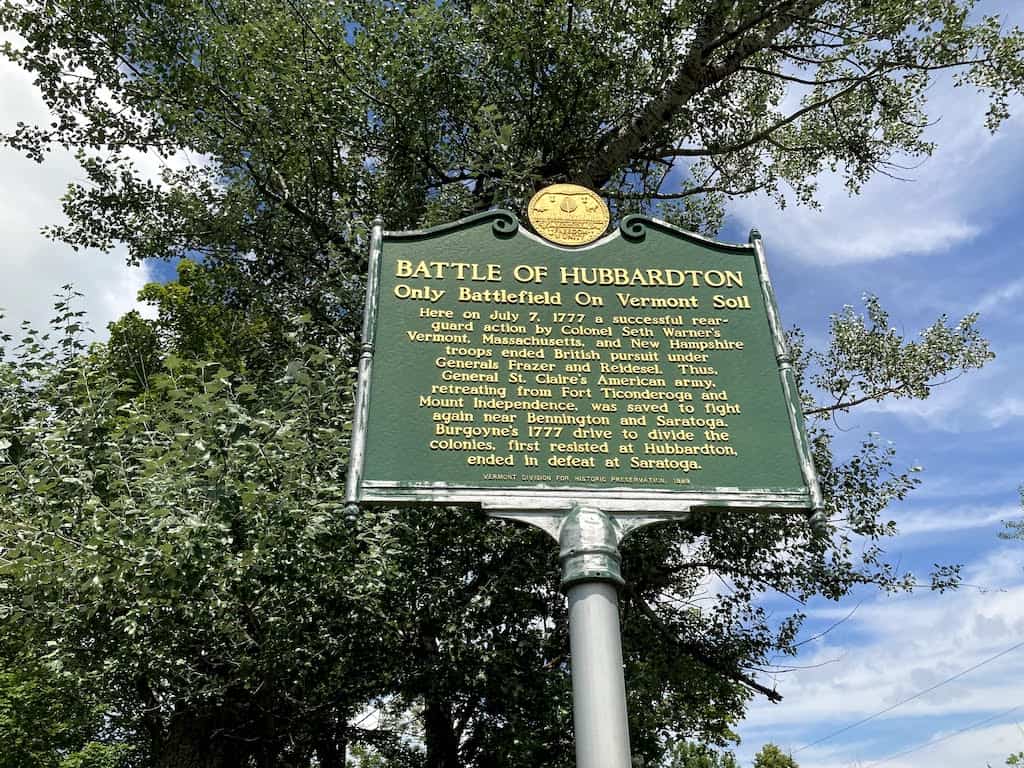
The only Revolutionary War battle fought on what would become Vermont soil happened on July 7, 1777, in Hubbardton. It is considered one of the most successful rear-guard actions in American history.
The trails through the fields and forest surrounding the battlefield tell the history of that day. As a bonus, you’ll be treated to magnificent views of the Taconic Mountains.
You can visit the grounds of the Hubbardton Battlefield State Historic Site anytime, but if you want to check out the museum too, visit between May 28 and October 9, Thursday through Sunday, 10 am – 5 pm.
6. Visit the Round Church in Richmond
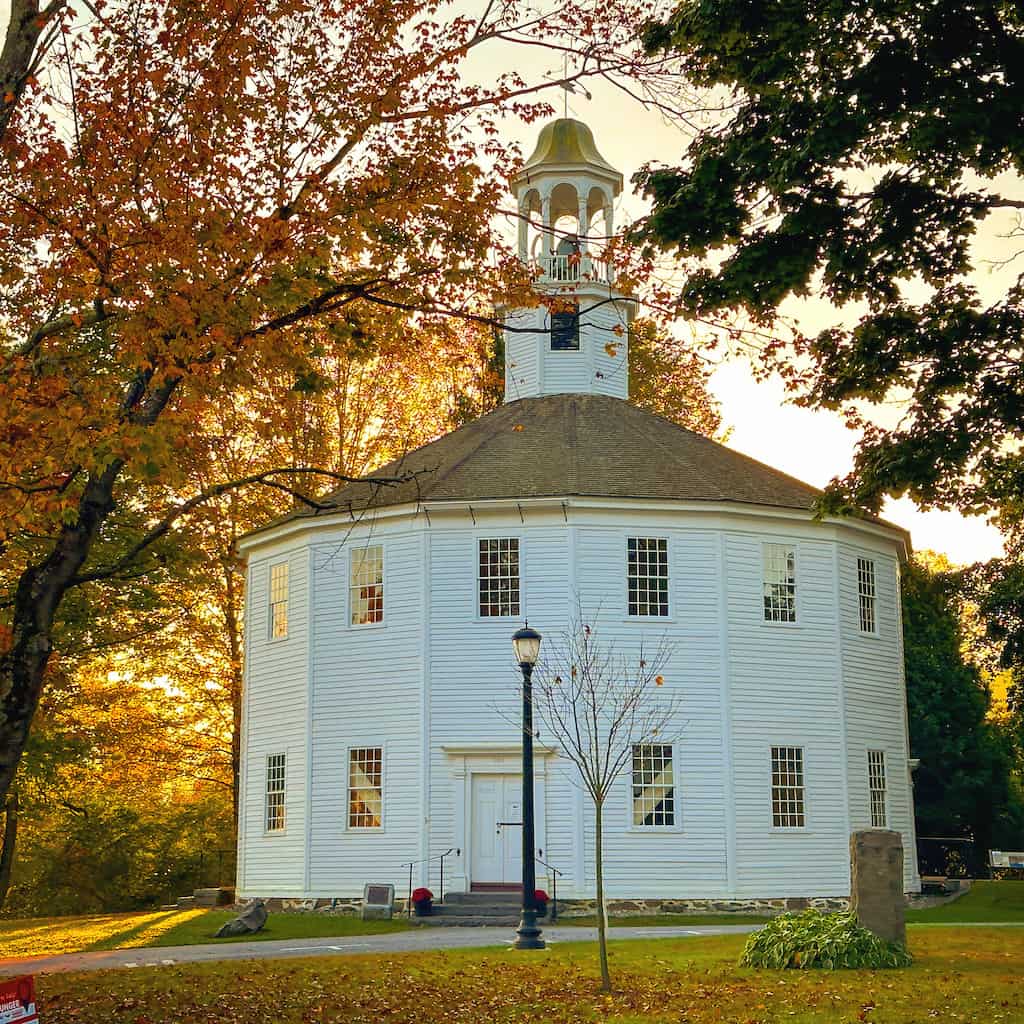
The Round Church is actually a 16-sided polygon, constructed in 1812-13 under the direction of local craftsman William Rhodes.
It was built to be a place of worship for five Protestant denominations: Baptists, Christians, Congregationalists, Methodists, and Universalists. Members of each denomination financed the construction of the church.
Today, the Old Round Church is maintained by the Richmond Historical Society. It is open to the public during the summer and fall, from 10 am – 4 pm daily, but if you’re hoping for a pic, I prefer sunrise or sunset best.
Also Read: Fall Foliage in Richmond, Jericho, and Huntington
7. Check out the Fairbanks Museum and Planetarium
Step inside the Fairbanks Museum & Planetarium, where curiosity knows no bounds. and discovery is around every corner. Our mission? To inspire wonder, ignite curiosity, and foster a deep respect for the natural world—a tradition we’ve upheld since 1889, when visionary industrialist Franklin Fairbanks first opened our doors in St. Johnsbury, Vermont.
Housed in a beautiful Victorian masterpiece, this National Historic Register building was built in 1889, when visionary industrialist Franklin Fairbanks first created this one-of-a-kind museum in St. Johnsbury, Vermont.
This time capsule of exploration is filled with thousands of natural wonders and cultural treasures from around the globe. From meteorites to mounted wildlife, fossils to gemstones, these cool exhibits celebrate the beauty and complexity of our planet.
At the Fairbanks Museum and Planetarium, you’l find:
- Exquisite ethnological artifacts collected from Africa, Japan, Egypt, and beyond during the Victorian era.
- A dazzling collection of birds, mammals, reptiles, insects, and fossils, meticulously preserved for generations of learners.
- Hands-on exhibits in the Fred Mold Hall of Science and the Soucy Family Exploration Station let visitors play with light, sound, gravity, and electricity, where learning feels like magic.
- Vermont’s only public planetarium, the Lyman Spitzer Jr. Planetarium, you can embark on a journey through the cosmos, with expert-led star shows happening daily.
8. Visit the Former Estate of Robert Todd Lincoln
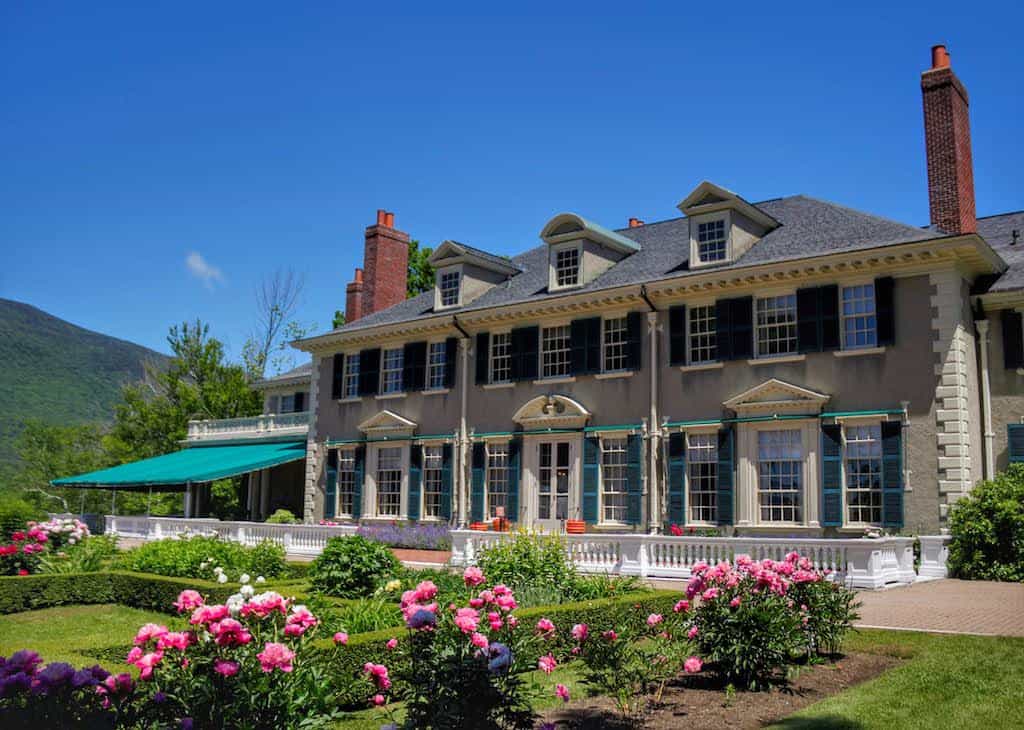
Robert was the only child of Mary Todd Lincoln and Abraham Lincoln to survive to maturity.
The Lincolns built Hildene in Manchester, Vermont, as a summer home at the turn of the 20th century. It has been beautifully restored to include the estate, gardens, a working farm, a restored Pullman car, and woodland trails.
Hildene offers guided and self-guided tours of the house. The home and grounds are open Thursday through Monday, 10 am-4:30 pm. $23 for adults | $6 for youth (6 to 16) | Members and children under 6 are free.
We recommend visiting Hildene when the peonies are blooming in May and June. They are highlights of the back garden, and the views are incredible.
9. Visit the Old Stone House Museum and Historic Village
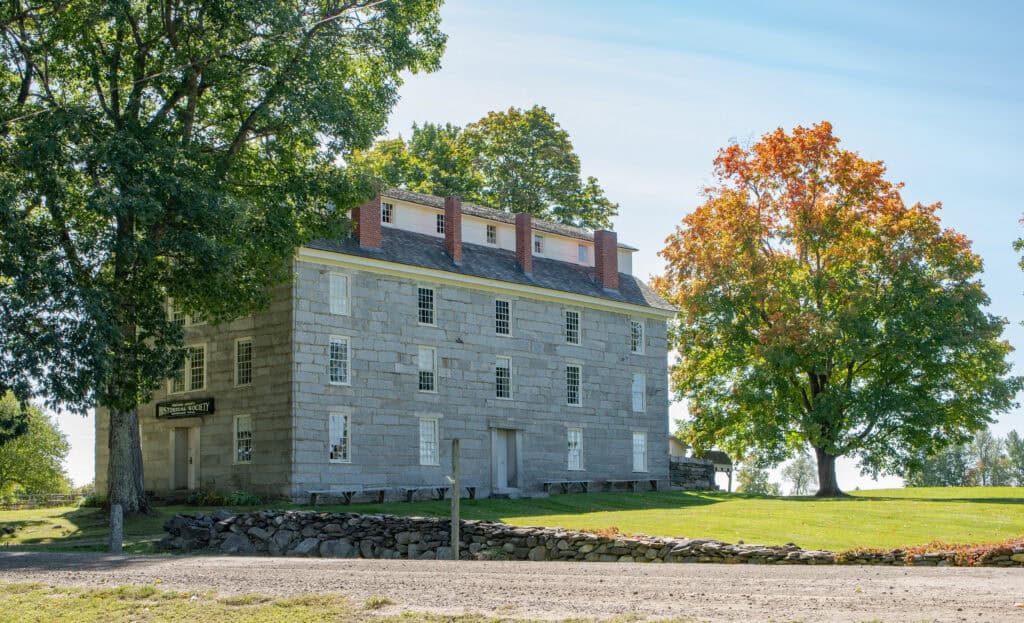
I stumbled upon this gem of a village by accident, simply by following roadside signs as I meandered around Vermont’s Northeast Kingdom.
Tucked away in the tiny hamlet of Brownington, Vermont, the Old Stone House Museum & Historic Village is a gateway to the past, where education, politics, and culture once thrived in Orleans County.
In the early 19th century, Brownington was a bustling hub along the Boston-to-Montreal stage route, known today as the Hinman Settler Road—the first road built through the region.
At the heart of this 60+ acre historic village stands the Old Stone House, a four-story marvel built in 1836 by Alexander Lucius Twilight, the first African American college graduate (Middlebury, 1823) and the first to serve in a state legislature (Vermont House of Representatives, 1836).
Twilight’s legacy endures not only in the stone walls of this iconic building but also in the Orleans County Grammar School, the county’s first secondary school, which he helped shape.
Brownington was also home to Samuel Read Hall, an education pioneer who introduced blackboards to American classrooms and founded one of the first teacher-training schools in the nation.
The Old Stone House Museum & Historic Village is open from mid-May to mid-October, Wednesday through Sunday, 11 am – 4 pm (closed Mondays & Tuesdays).
Guided tours are required to explore inside the Old Stone House and our other historic buildings. You can book online in advance or in person upon arrival.
10. Visit the Former Home and Grave of Poet Robert Frost
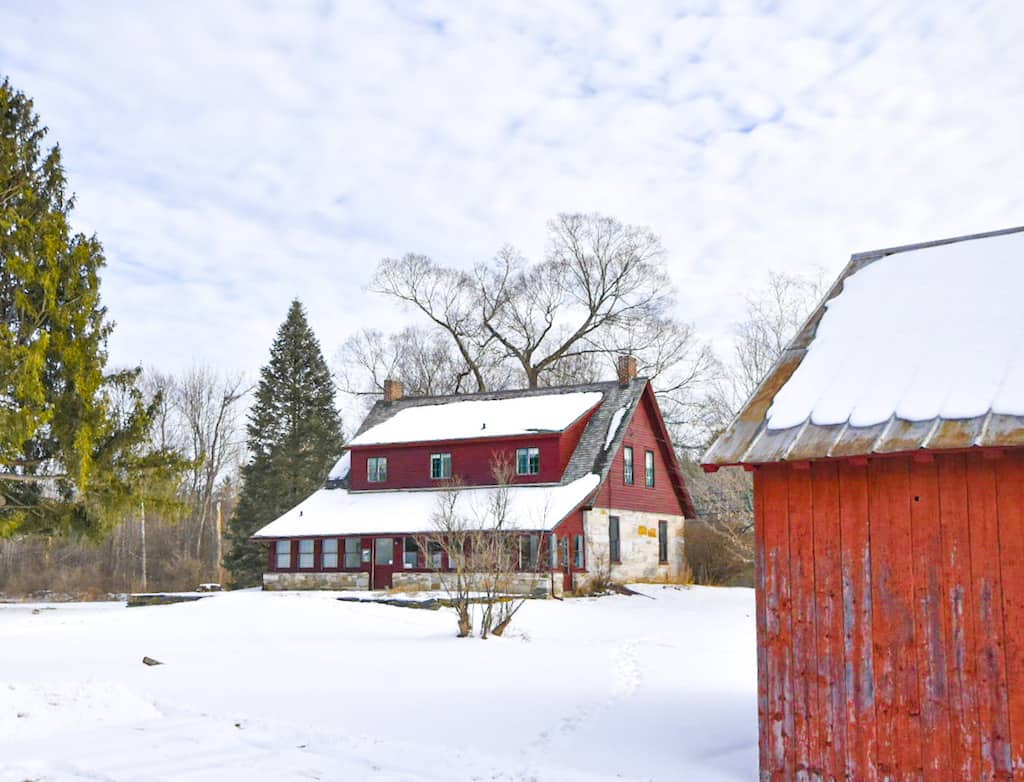
Another famous author who called Vermont home for a time was poet Robert Frost, who lived in both Shaftsbury and Ripton, Vermont.
His Shaftsbury home is now the Robert Frost Stone House Museum. Frost lived here from 1920 to 1929, when he wrote “Stopping by Woods on a Snowy Evening.”
While you’re in the area, head a few miles south to Old Bennington, where you can pay your respects to Robert Frost at his gravesite behind the Old First Church.
11. Check the Largest Collection of Grandma Moses Paintings at Bennington Museum
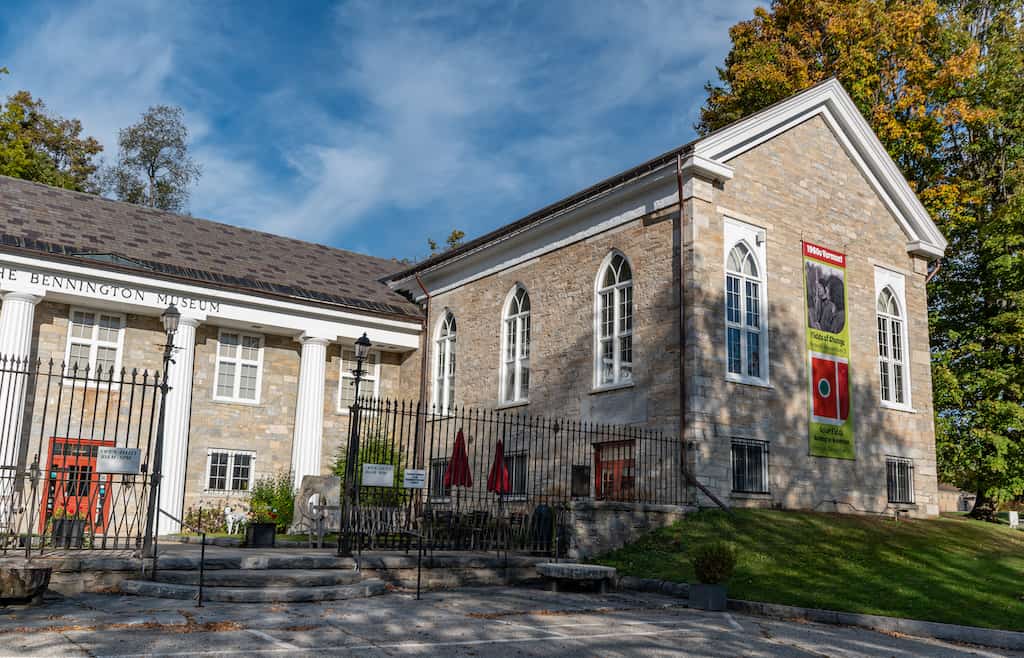
There’s more than one reason to check out Bennington Museum – thought-provoking history and art exhibits, intriguing special events, and even an outdoor nature trail.
But Bennington Museum is probably best known for housing the largest collection of Grandma Moses paintings in the world.
Anna Mary Robertson started painting in her seventies and became one of America’s most prolific and famous self-taught artists within a few years.
Visit the Grandma Moses Schoolhouse and check out the many artifacts from her painting life.
12. Straddle the Vermont-Canadian Border in a Library/Opera House

If you visit the little town of Derby Line, which happens to be where I got my start in life, you can watch a show in Quebec while you sit in the audience in Vermont.
The Haskell Free Library and Opera House was deliberately built on the international border and opened in 1904.
Step inside, and you’ll find yourself in a place where geography defies logic. The library collection and the opera stage are in Canada, but the main entrance and most of the opera seating are in the United States. This unique layout has led to some playful nicknames, such as “the only library in the U.S. with no books” and “the only opera house in the U.S. with no stage.”
Patrons from Canada can enter through the U.S. door without needing to check in at customs, as long as they follow a prescribed sidewalk route and return to Canada immediately after their visit. There’s no entrance from the Canadian side, although a discreet emergency exit exists.
Inside the opera house, a bold black line runs across the floor, marking the international boundary. Half the audience sits in the US, while performers take the stage in Canada. Even the building’s utilities follow this split: it has two postal codes, two telephone area codes, and two national identities.
13. Visit Vermont’s Most Visited Historic Site and Tallest Building
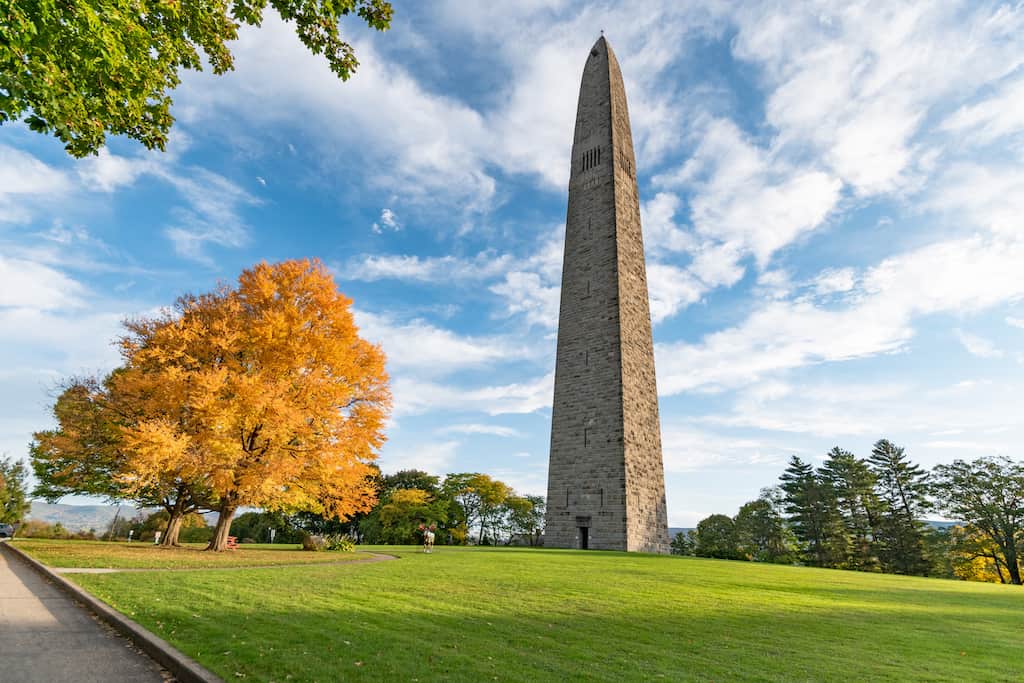
At 306 feet, the Bennington Battle Monument is the tallest building in the state, and it’s the most popular of Vermont’s state historic sites.
If you visit between May and October, you can take an elevator to the top for spectacular views of Bennington and the Green Mountains.
The Bennington Monument was completed in 1889 to commemorate the Battle of Bennington, which took place on August 16, 1777. In the famous battle, Brigadier General John Stark and 1,400 New Hampshire men defeated two detachments of the British army, who were seeking to capture a store of weapons and food maintained where the monument now stands.
The victory at the Battle of Bennington is celebrated annually across Vermont as a state holiday.
Historic tidbit: Although the battle is called the Battle of Bennington, it actually took place about 10 miles west in Walloomsac, New York.
14. Walk Around the Nation’s Smallest Capital City
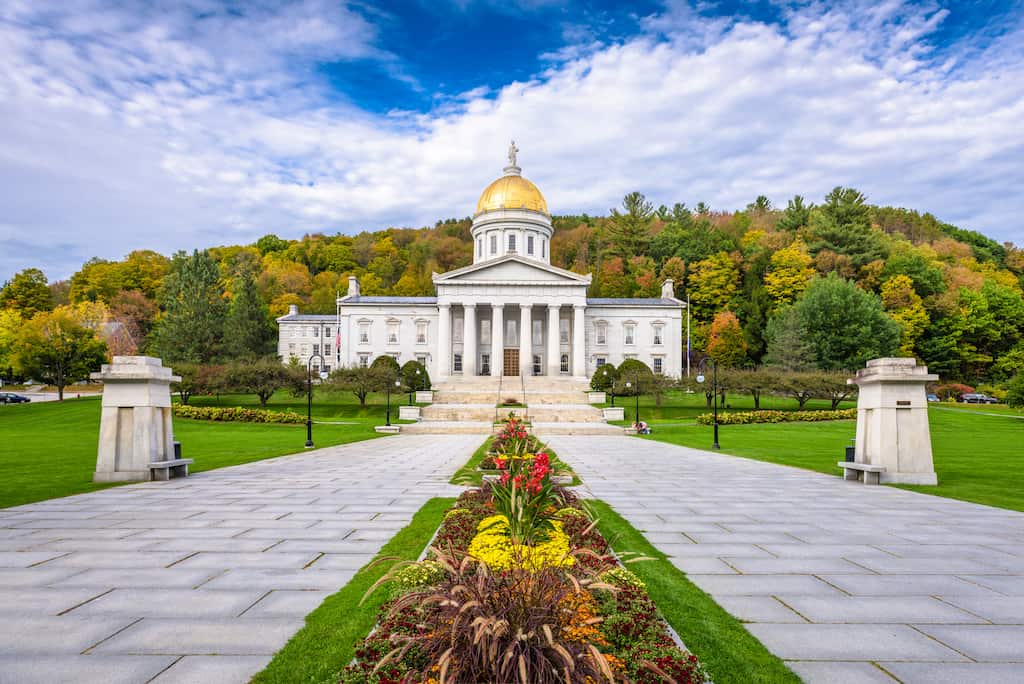
With a population of just under 8,000 people, Montpelier is the smallest state capital in the country. Despite its demure size, Montpelier has a vibrant downtown, a lively music and arts scene, fabulous dining, and lots of outdoor recreation.
Be sure to visit the Vermont State House, one of the oldest and best-preserved of the nation’s state capitols. After 140 years, the State House Chambers are the oldest legislative chambers in their original condition in the United States.
15. Learn About Vermont’s Maritime History at the Lake Champlain Maritime Museum
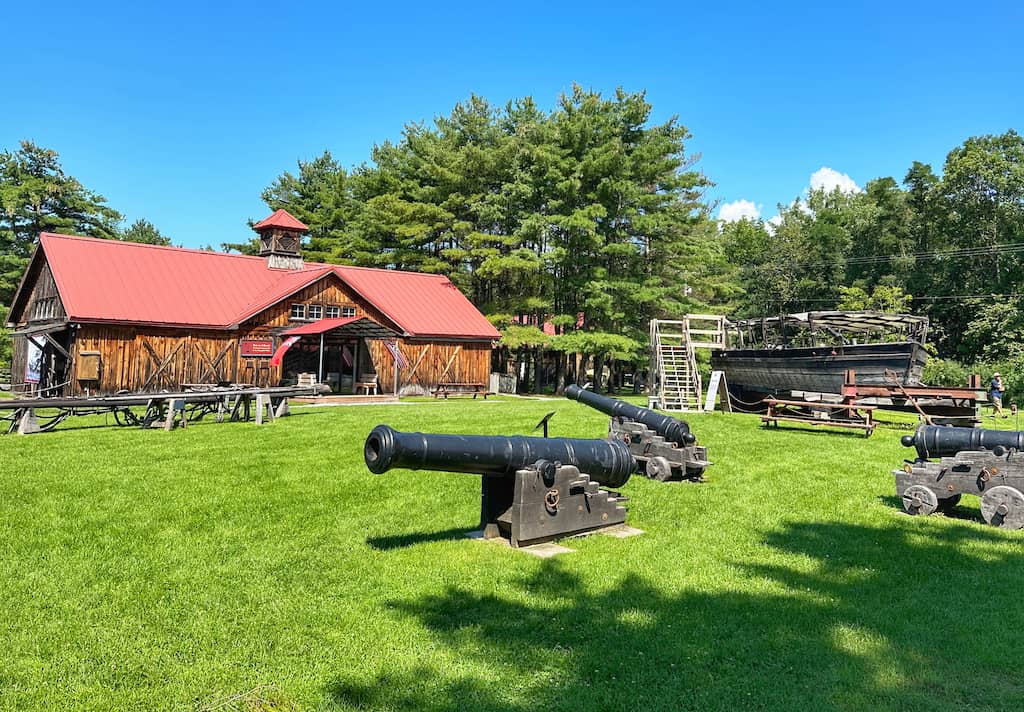
At the Lake Champlain Maritime Museum in Ferrisburgh, you can tour the underwater shipwrecks at the bottom of the lake without getting wet. Many of the shipwrecks are part of the Vermont Underwater Historic Preserves. You can take a boat out and explore these treasures with a guide using an ROV with a robotic camera.
The museum includes indoor and outdoor exhibits, historic boats, a boat shop, an archaeology lab, a theater, and a research space. It’s open between May and October each year, and admission is free for all visitors.
16. Learn About the Underground Railroad in Vermont at the Rokeby Museum
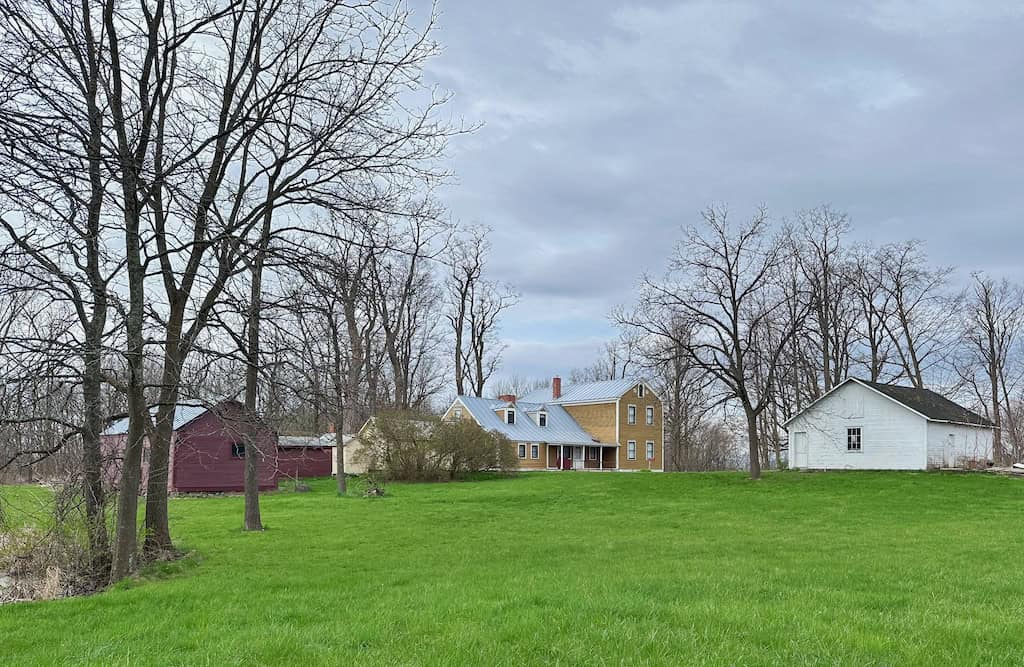
Located in Ferrisburgh, Vermont, the Rokeby Museum explores the Abolitionist Movement and the Underground Railroad in Vermont. Visit the historic 1780s farmstead with eight outbuildings and several miles of hiking trails.
For almost 200 years, the house was the home of the Robinson family, and the home served as a safe house along the Underground Railroad in the 1830s and 1840s.
Rokeby Museum is open between May and October, and the hiking trails are open year-round. Admission is $12 for adults, $11 for seniors, $10 for students, and free for children under five.
Have you visited any of these incredible historic sites in Vermont? Which ones should we check out next?
Follow us on social media for more Vermont inspiration!

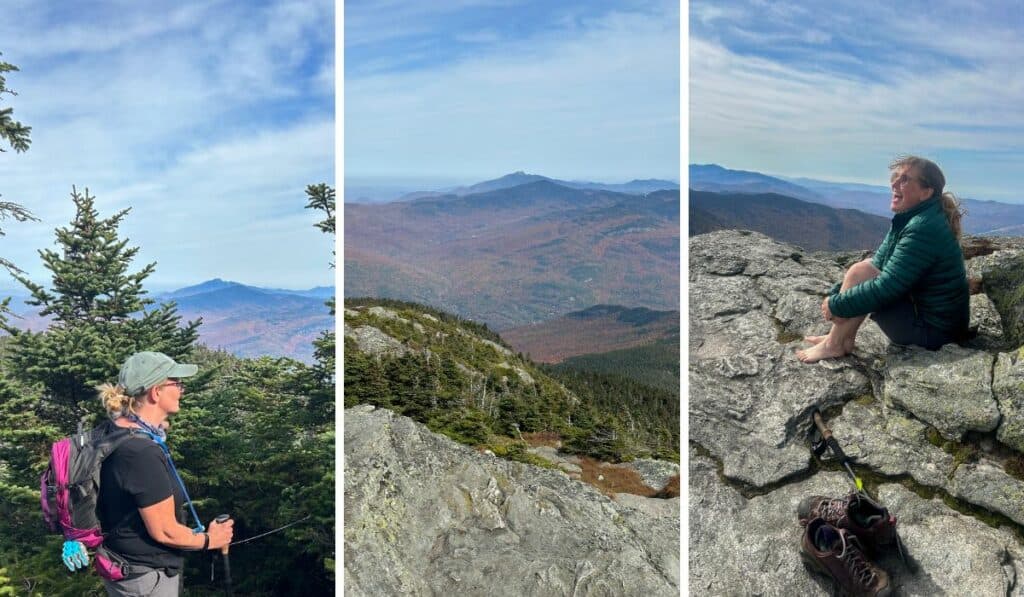
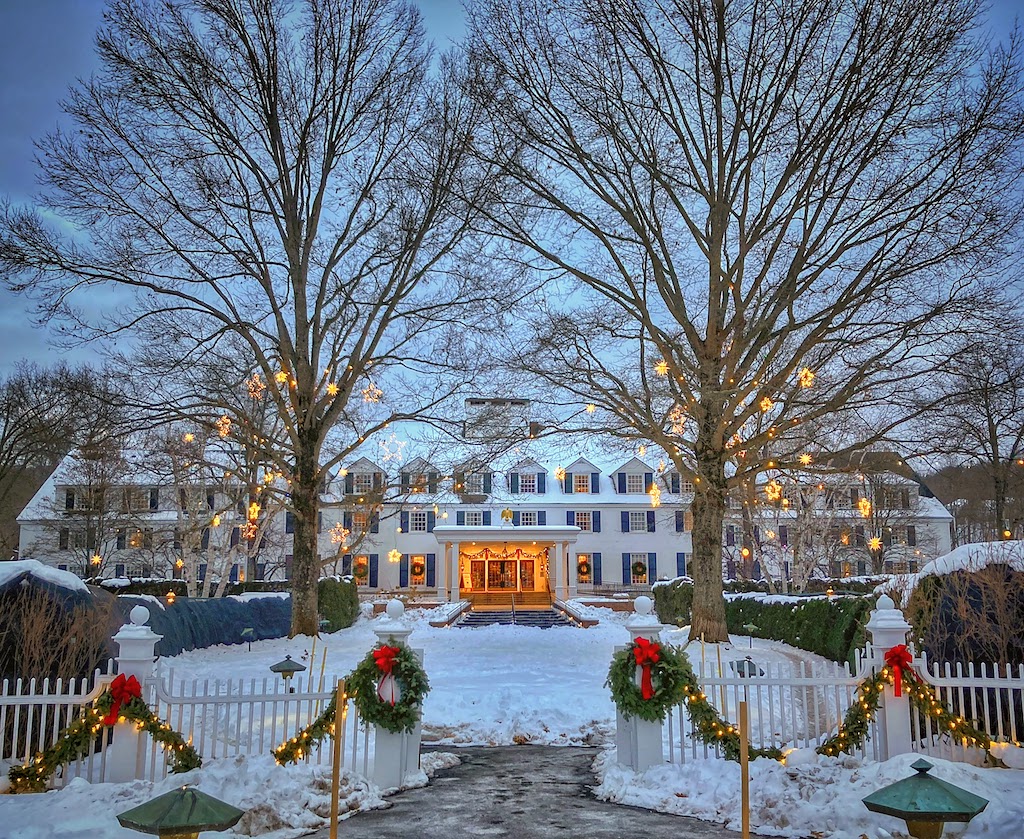
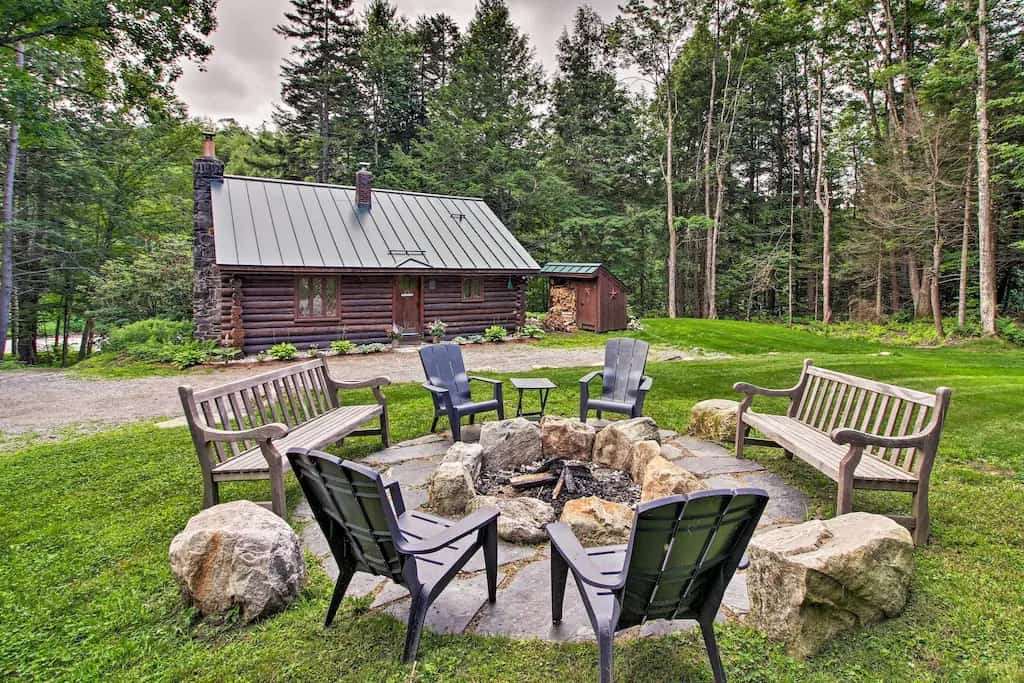
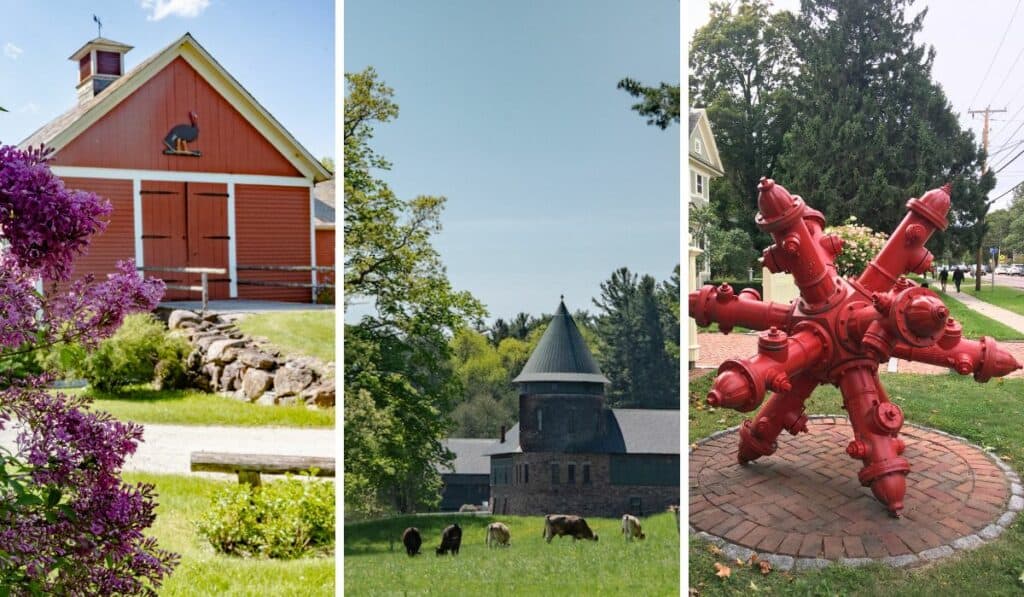
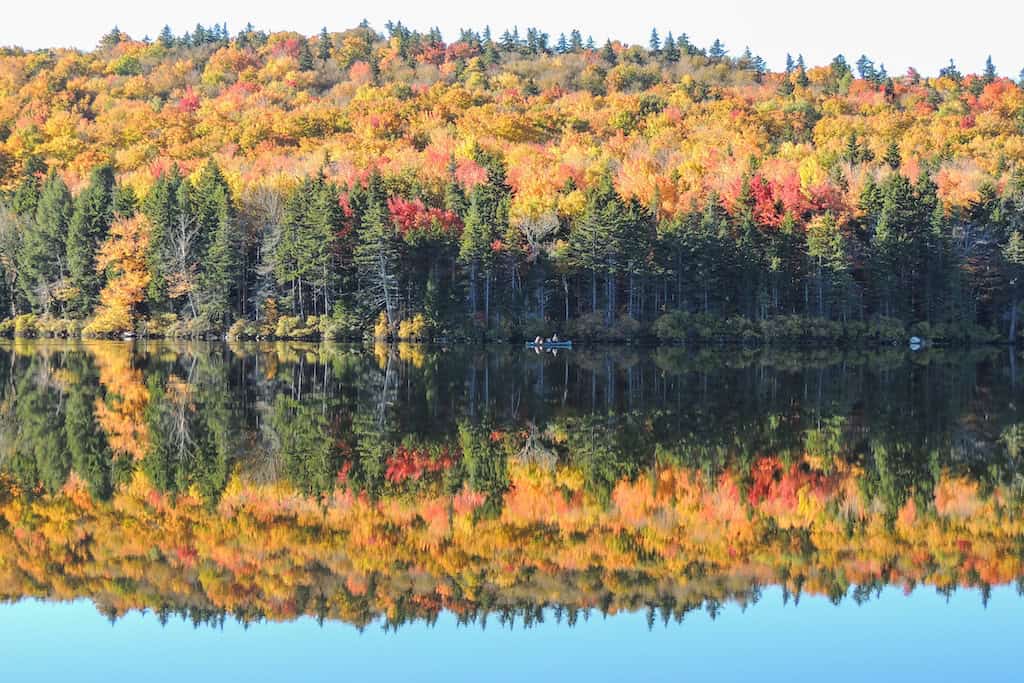
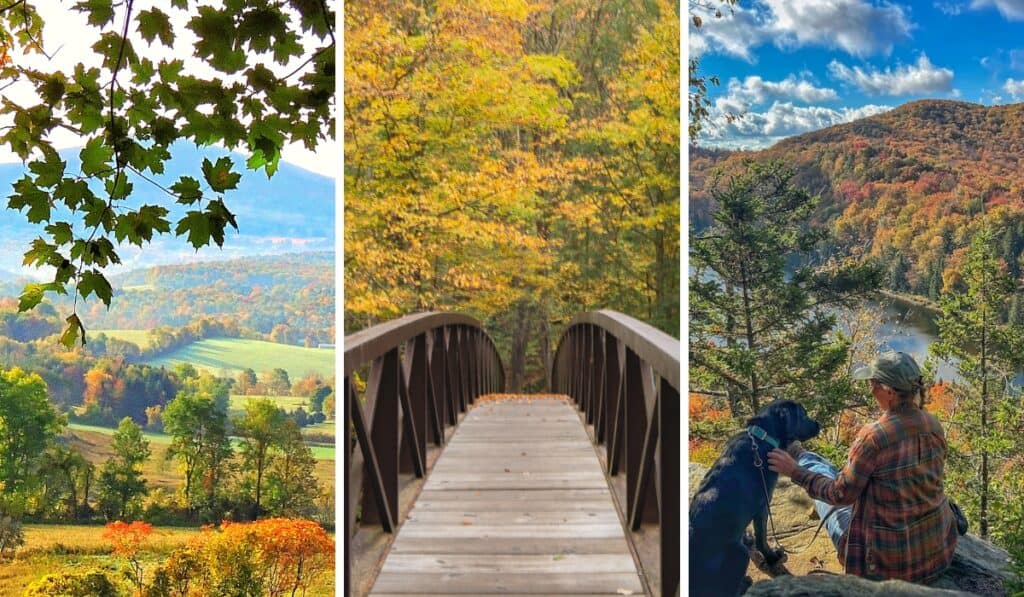
Great. See some left to visit